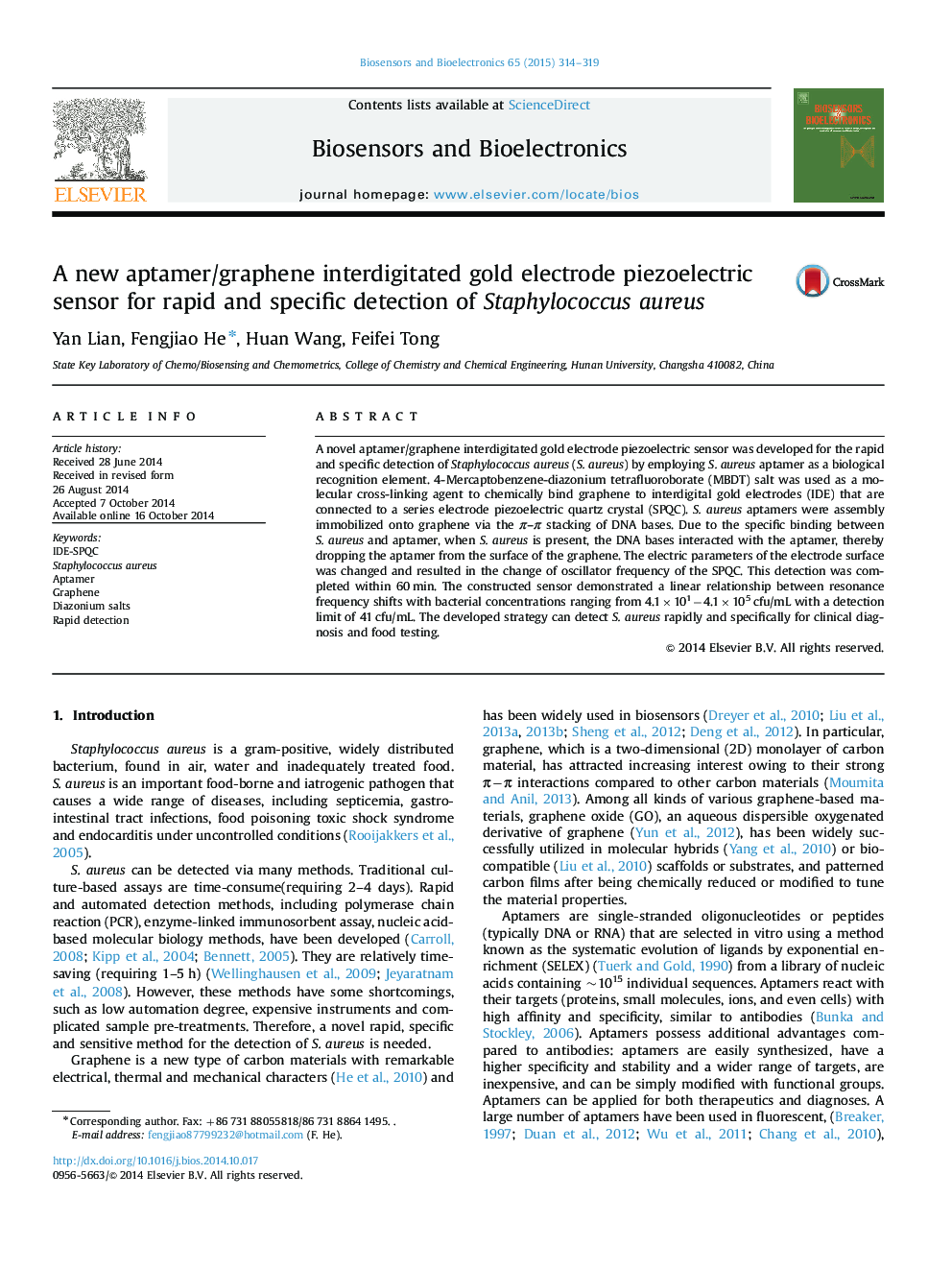| کد مقاله | کد نشریه | سال انتشار | مقاله انگلیسی | نسخه تمام متن |
|---|---|---|---|---|
| 866405 | 1470966 | 2015 | 6 صفحه PDF | دانلود رایگان |
• Aptamer/graphene interdigitated gold electrode piezoelectric sensor was used for the first time to detect Staphylococcus aureus which shows a high sensitivity, specificity and rapid detection time.
• The novel biosensor was proposed using Staphylococcus aureus aptamer as a biological recognition element and the graphene could improve the electron transfer rate between the interdigital gold electrodes. The proposed sensor is stable, highly selective and sensitive without complicated modifications, so the detection limit is low.
• The proposed sensor has been successfully applied in the analysis of Staphylococcus aureus in milk. Comparing to the common assay, the proposed method needs no pretreatment process of the sample. It is simpler and the equipment cost is low.
A novel aptamer/graphene interdigitated gold electrode piezoelectric sensor was developed for the rapid and specific detection of Staphylococcus aureus (S. aureus) by employing S. aureus aptamer as a biological recognition element. 4-Mercaptobenzene-diazonium tetrafluoroborate (MBDT) salt was used as a molecular cross-linking agent to chemically bind graphene to interdigital gold electrodes (IDE) that are connected to a series electrode piezoelectric quartz crystal (SPQC). S. aureus aptamers were assembly immobilized onto graphene via the π–π stacking of DNA bases. Due to the specific binding between S. aureus and aptamer, when S. aureus is present, the DNA bases interacted with the aptamer, thereby dropping the aptamer from the surface of the graphene. The electric parameters of the electrode surface was changed and resulted in the change of oscillator frequency of the SPQC. This detection was completed within 60 min. The constructed sensor demonstrated a linear relationship between resonance frequency shifts with bacterial concentrations ranging from 4.1×101−4.1×105 cfu/mL with a detection limit of 41 cfu/mL. The developed strategy can detect S. aureus rapidly and specifically for clinical diagnosis and food testing.
Journal: Biosensors and Bioelectronics - Volume 65, 15 March 2015, Pages 314–319
